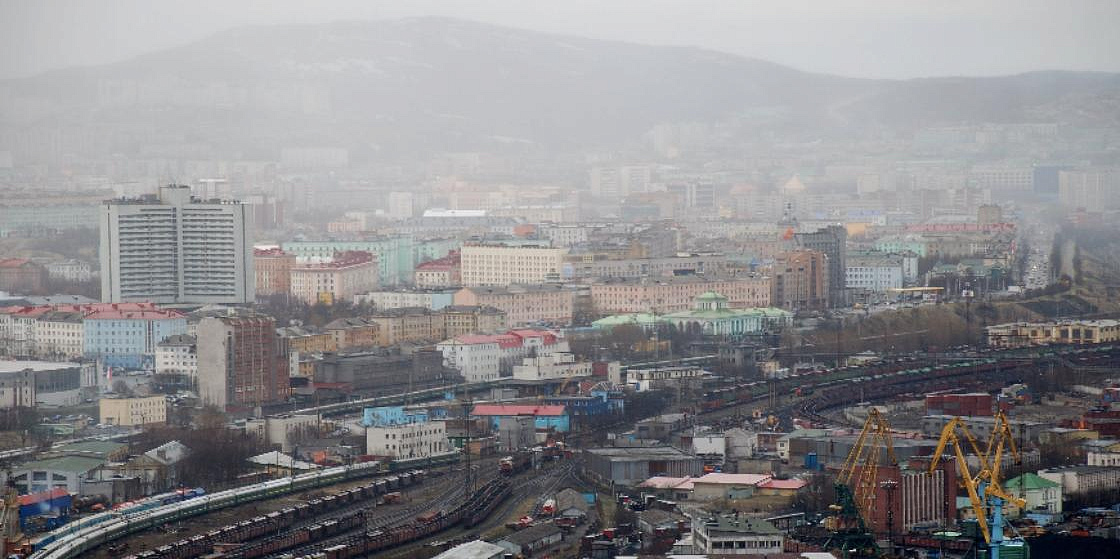
Photo: Nikitin Yaroslav/GeoPhoto.ru
Arctic Weekly: Energy Transition, Arctic Hectare and Nuclear Solutions
Climate changes being a major concern for Russia, the federal government will establish several working groups to focus on designing a strategy for transiting to a low-carbon economy. Their primary task will be to find ways for adapting the Russian economy (and, specifically, its export-oriented sectors) to the global trend towards decarbonization and a wider use of renewables. The government reportedly sees such transit in the context of not only policies in the field of technology, resource management and production, but also in social terms, e.g. as a means of fostering the improvement of quality of life of average Russians.
The Russian Arctic may have an important role in this respect -- as a region both hosting and providing the resources for new industries producing eco-friendly / zero-carbon fuels such as blue and green hydrogen, ammonia, methanol etc.
And now on to other news.
Arctic Hectare launched. On 1 August, the Arctic Hectare program kicked off. As part of the program, thousands of land plots across the Russian Arctic are being distributed by regional authorities to those willing to use such plots for making business or building a house.
Rosatom’s prospects. Rosatom’s top manager Alexey Likhachev briefed President Putin on the ongoing and future projects of this government-owned nuclear monopoly operating the bulk of the country’s icebreaker fleet and the NSR. Key points made:
●The company performs well despite the pandemic and the world crisis. In 2020, it generated some 215.7 billion kWh of electricity, a record-setting amount.
● The country’s fleet of nuclear-powered icebreakers being “in top shape”, the company seeks to obtain additional funding for building more icebreakers in light of the rapidly expanding transportation capacity of the NSR.
● The company is seeing a rapid growth in freight carried via the NSR.
● The idea of an international transit lane across the NSR has been recently gaining more support both domestically and abroad, in part owing to the March Suez Canal blockage. Rosatom is committed to invest into the development of the NSR as a route connecting Europe and Asia.
Nuclear energy for the Arctic. Rosatom intends to become a major supplier of electricity to off-grid remote areas in the Russian Arctic. It is focused on promoting its self-contained, low-capacity power plants as an innovative solution for energy supply in remote locations across the High North. One such NPP to be constructed in the Yakut Republic by 2028 will provide electricity to the Kyuchus mine, one of the largest gold mines in Russia and the world, as well as to neighboring off-grid settlements currently relying on diesel generators. As part of another Rosatom’s project, 4 floating nuclear power stations will be built in St. Petersburg for the Chukotka Autonomous District.
Konyukhov’s mission. Russian explorer and survivalist Fyodor Konyukhov returned to Murmansk from his one-man mission to the North Pole. The traveler spent 245 hours on pack ice where he has camped to gather data on microplastic pollution of, and seismic activity in, the Arctic Ocean as part of the Clean Arctic initiative.
Arctic cable. A new cable manufacturing plant was launched in Murmansk. It will produce 12,650 kilometers of 6-strand fiber-optic cable for Polar Express, the transarctic submarine line to connect the Western part of the Russian Arctic (Murmansk) with the country’s Far East (Vladivostok).
Arctic tourism. A team of researchers will survey Franz Josef Land and Novaya Zemlya, Russian archipelagos in the Arctic Ocean, to select the best places of interest to be visited by tourists. Researchers will assess the potential impact of visitors on local wildlife and habitats to prevent any harm from tourism to the island ecosystems.
Brought to you by Alexander Stotskiy, PORA.
The Russian Arctic may have an important role in this respect -- as a region both hosting and providing the resources for new industries producing eco-friendly / zero-carbon fuels such as blue and green hydrogen, ammonia, methanol etc.
And now on to other news.
Arctic Hectare launched. On 1 August, the Arctic Hectare program kicked off. As part of the program, thousands of land plots across the Russian Arctic are being distributed by regional authorities to those willing to use such plots for making business or building a house.
Rosatom’s prospects. Rosatom’s top manager Alexey Likhachev briefed President Putin on the ongoing and future projects of this government-owned nuclear monopoly operating the bulk of the country’s icebreaker fleet and the NSR. Key points made:
●The company performs well despite the pandemic and the world crisis. In 2020, it generated some 215.7 billion kWh of electricity, a record-setting amount.
● The country’s fleet of nuclear-powered icebreakers being “in top shape”, the company seeks to obtain additional funding for building more icebreakers in light of the rapidly expanding transportation capacity of the NSR.
● The company is seeing a rapid growth in freight carried via the NSR.
● The idea of an international transit lane across the NSR has been recently gaining more support both domestically and abroad, in part owing to the March Suez Canal blockage. Rosatom is committed to invest into the development of the NSR as a route connecting Europe and Asia.
Nuclear energy for the Arctic. Rosatom intends to become a major supplier of electricity to off-grid remote areas in the Russian Arctic. It is focused on promoting its self-contained, low-capacity power plants as an innovative solution for energy supply in remote locations across the High North. One such NPP to be constructed in the Yakut Republic by 2028 will provide electricity to the Kyuchus mine, one of the largest gold mines in Russia and the world, as well as to neighboring off-grid settlements currently relying on diesel generators. As part of another Rosatom’s project, 4 floating nuclear power stations will be built in St. Petersburg for the Chukotka Autonomous District.
Konyukhov’s mission. Russian explorer and survivalist Fyodor Konyukhov returned to Murmansk from his one-man mission to the North Pole. The traveler spent 245 hours on pack ice where he has camped to gather data on microplastic pollution of, and seismic activity in, the Arctic Ocean as part of the Clean Arctic initiative.
Arctic cable. A new cable manufacturing plant was launched in Murmansk. It will produce 12,650 kilometers of 6-strand fiber-optic cable for Polar Express, the transarctic submarine line to connect the Western part of the Russian Arctic (Murmansk) with the country’s Far East (Vladivostok).
Arctic tourism. A team of researchers will survey Franz Josef Land and Novaya Zemlya, Russian archipelagos in the Arctic Ocean, to select the best places of interest to be visited by tourists. Researchers will assess the potential impact of visitors on local wildlife and habitats to prevent any harm from tourism to the island ecosystems.
Brought to you by Alexander Stotskiy, PORA.
6 August 2021




